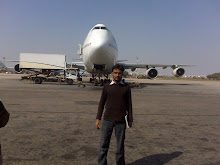The ultimate goal for the retinal scanning technology is a lightweight eyewear package as below.
The approach can also be adapted to image projection systems. The applications for VRD technology are varied HUDs, color projections systems for entertainment or flight training simulators, etc. A key area for continued development is an image display system that can augment and enhance a person's task performance.
"Helicopter pilots require information to support time-critical (and often life-and-death) decisions," Swanson said. "If that information is presented in a graphical and intuitive fashion, it reduces the pilot's workload and can enhance visibility in degraded conditions. A helmet-mounted display capable of presenting full-color graphical information in both day and night flight operations has been the missing link to creating an effective pilot-data interface. That ultimately could save both lives and money."
Rick Rutkowski, Microvision's president and chief executive officer, said, "The Army has a powerful vision: the ability to overlay flight reference data, sensor imagery and weapons symbology on [images from] the outside world." Such a versatile display capability is expected to provide a significant performance boost to both aircraft and pilot. "When you can also enable a pilot to see the normally invisible 'bloom' of a radar signature, or to project a 'pathway in the sky' in front of him, and to superimpose wireframe or 3-D imagery onto the terrain, it becomes even more powerful," he said.
Microvision delivered a monochrome green binocular HMD system to the Army with a total field of view of 52 horizontal by 30 vertical with 1716 horizontal pixels by 960 display lines, and 1470 ft-Lm displayed raster luminance at the eye (see Figure 3). The system weighs approximately 2 lb, including two display engines (one for each eye), the helmet-mounting structure, and the optics to provide the large display format. The system will project the images in a "see through" fashion the pilot will still be able to see the background scene, but has the option of focusing in on the presented information.

No comments:
Post a Comment